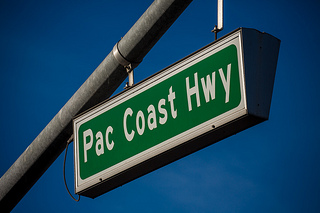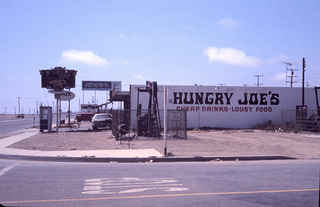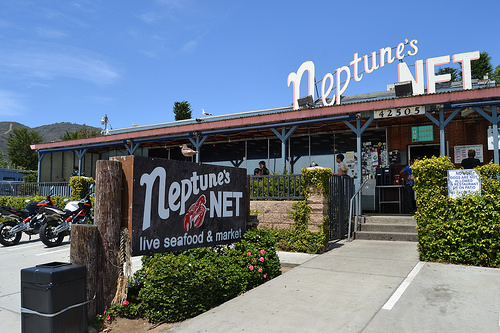All owners of real estate in California risk liability for injuries to others on the premises. The owner has possession (or control) of the property, and if it can be established they had knowledge of a dangerous condition, they are at risk. Real estate attorneys advise their clients that to establish liability the injured party must show that the owner had a duty of care to the injured party, there was a breach of the duty of care that was the proximate cause of the injuries, and the injured party suffered damages. But what about injuries that occur off the property? A landowner in LA County was disappointed to learn that they may have liability for an injury that occurred off the premises, to someone who had not been on the defendant’s property.
 In Annocki v. Peterson Enterprises, LLC, a vehicle which exited the defendant’s restaurant parking lot collided with and killed a motorcyclist. The biker’s parents brought this suit for damages. The restaurant parking lot faced the Pacific Coast Highway, and there was a divided median. The patron left the parking lot and tried to make a left turn into oncoming traffic. The plaintiffs claim that the owner was negligent in that the design of the driveway created a decreased visibility of the adjacent highway. There were no signs indicating ‘right-turn only.”
In Annocki v. Peterson Enterprises, LLC, a vehicle which exited the defendant’s restaurant parking lot collided with and killed a motorcyclist. The biker’s parents brought this suit for damages. The restaurant parking lot faced the Pacific Coast Highway, and there was a divided median. The patron left the parking lot and tried to make a left turn into oncoming traffic. The plaintiffs claim that the owner was negligent in that the design of the driveway created a decreased visibility of the adjacent highway. There were no signs indicating ‘right-turn only.”
The court first reviewed the law on determining whether the owner had a duty to someone off the premises. The California Supreme Court has determined that this requires balancing of a number of considerations; the major ones are
1) the foreseeability of harm to the plaintiff,
2) the degree of certainty that the plaintiff suffered injury,
3) the closeness of the connection between the defendant’s conduct and the injury suffered,
4) the moral blame attached to the defendant’s conduct,
5) the policy of preventing future harm,
6) the extent of the burden to the defendant and consequences to the community of imposing a duty to exercise care with resulting liability for breach, and
7) the availability, cost, and prevalence of insurance for the risk involved. (Rowland v. Christian)
 When the defendant has no control over the property, there is no duty to exercise reasonable care; thus no duty to prevent injury on a neighboring property. However, there are exceptions. If the landowner’s property is maintained in a way that exposes persons to an unreasonable risk of injury offsite, they may be liable for injuries.
When the defendant has no control over the property, there is no duty to exercise reasonable care; thus no duty to prevent injury on a neighboring property. However, there are exceptions. If the landowner’s property is maintained in a way that exposes persons to an unreasonable risk of injury offsite, they may be liable for injuries.
When this court reviewed the Rowland factors it found that the facts here support finding defendant had a duty to warn patrons of the danger in exiting its parking lot as it was on notice of the dangerous conditions of the highway and the risk it posed to patrons leaving the restaurant as well as the danger to persons traveling the highway from a patron exiting the lot in an unsafe manner.
” First, given the center divider in the roadway, it was foreseeable that patrons exiting at night might not be aware of its presence and make an unsafe turn. At night the dividers in the road would be more difficult to see and patrons leaving the restaurant may have consumed alcohol.
Second, an unsafe turn would likely cause harm either to the patron leaving the parking lot or persons on the roadway.
Third, there is close connection between Geoffrey’s failure to warn and the injury plaintiffs’ decedent suffered.
The remaining factors are closely connected: there is moral blame that can be attached to defendant’s failure to take minimal, inexpensive steps to avert harm to its patrons and persons in the roadway. Prominent reflective signage and driveway paint would have done much to avoid the accident here.”

This court allowed the plaintiffs to amend their complaint (to survive a demurrer) and therefore, this is not the end of the case. However, given the court’s direction, the restaurateur is exposed to serious damages, and is presumably insured.
Photos:
https://www.flickr.com/photos/septim/10920802046/sizes/n/
https://www.flickr.com/photos/ocarchives/12443367384/sizes/n/
https://www.flickr.com/photos/7552532@N07/14149077203/sizes/m/
 California Real Estate Lawyers Blog
California Real Estate Lawyers Blog

